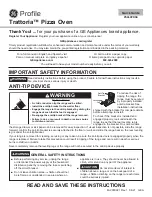
english-6
ProcessInG tIPs
1. Cut all fruits and vegetables, cooked meats, fish, seafoods and cheeses
into pieces 1 inch or smaller.
2. Do not exceed the quantities indicated in the Food Processing Charts.
3. Always hold hand firmly on the Cover when starting and running Motor.
4. Do not process hot liquids or frozen foods.
5. Do not process whole spices (except peppercorns) such as nutmeg or cinnamon.
They may cause damage to the surface of the Processor Bowl.
6. Process the hardest foods first, using only a few Fast Pulses to begin chopping.
Add more delicate foods and continue to process using the Fast Pulse technique.
The harder foods will continue to be chopped along with the softer foods.
7. Processing of Parmesan cheese, dried dates or other extremely hard foods
is not recommended. If a knife cannot easily pierce the food, it should
NOT
be processed in the Food Processor Accessory.
8. The Food Processor Accessory is not designed to whip cream, whip egg whites
or process dough. Use a standard mixer for those tasks.
9. If liquid leaks from Cover, there is too much liquid in the recipe. Adjust the liquid
level to prevent leakage.
10. The temperature of cheese will affect how it processes. Cheese for spreads
should be at room temperature for a smooth, creamy texture. “Grated” cheese
should be refrigerator cold.
11. Large, harder pieces of food can be processed with several Fast Pulses
to coarsely chop. Then process continuously for a fine texture.
TO CONVERT A RECIPE
1. Total the amount of dry and liquid ingredients. If the total exceeds 3 cups
(750 ml), decide if the recipe can be made easily in batches. Do not attempt
to process large recipes.
2. If total is under 1 cup (250 ml), process dry ingredients or the most finely
chopped foods first.
3. Then add remaining ingredients and combine with several Fast Pulses to mix
together.
















































